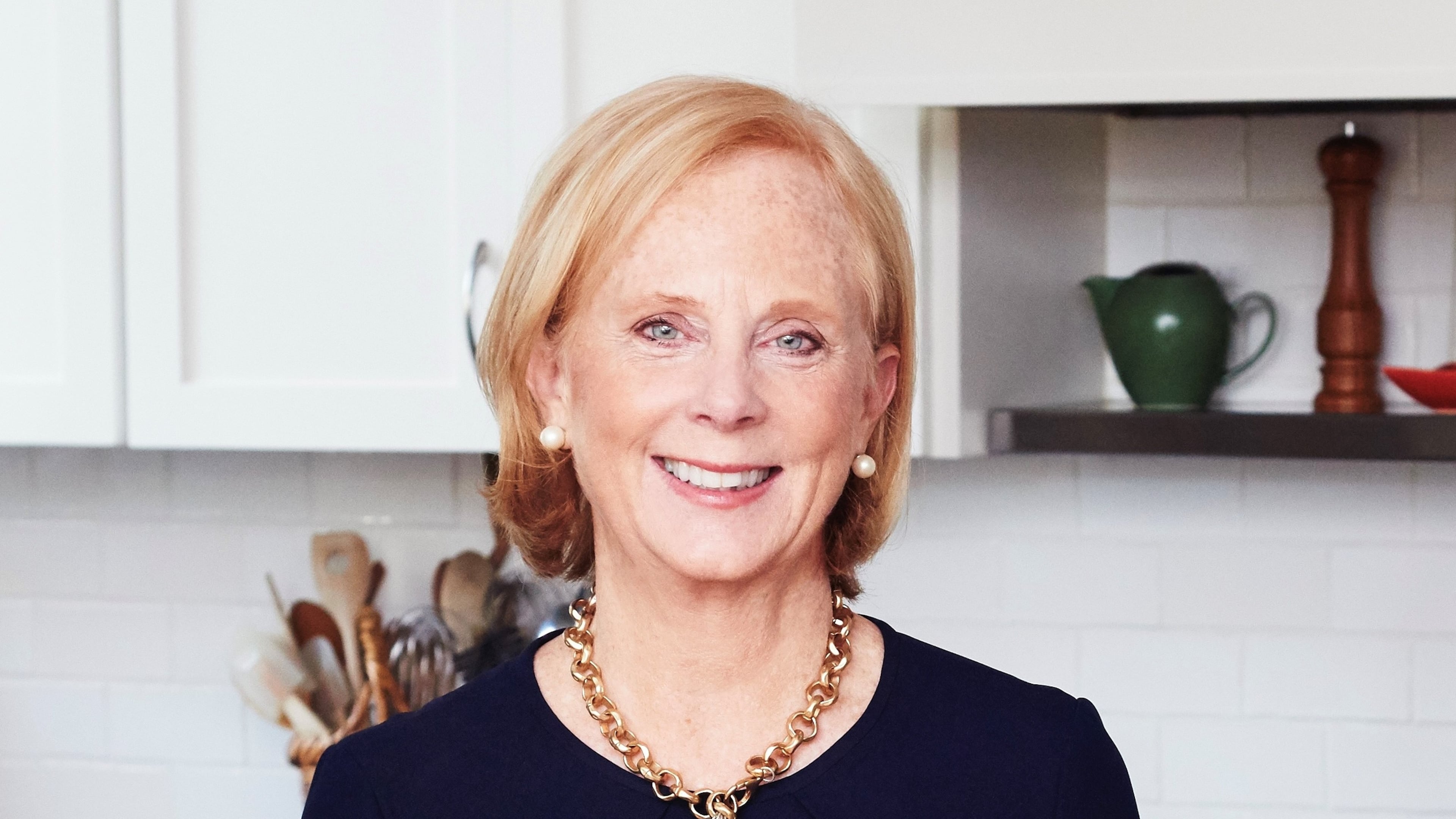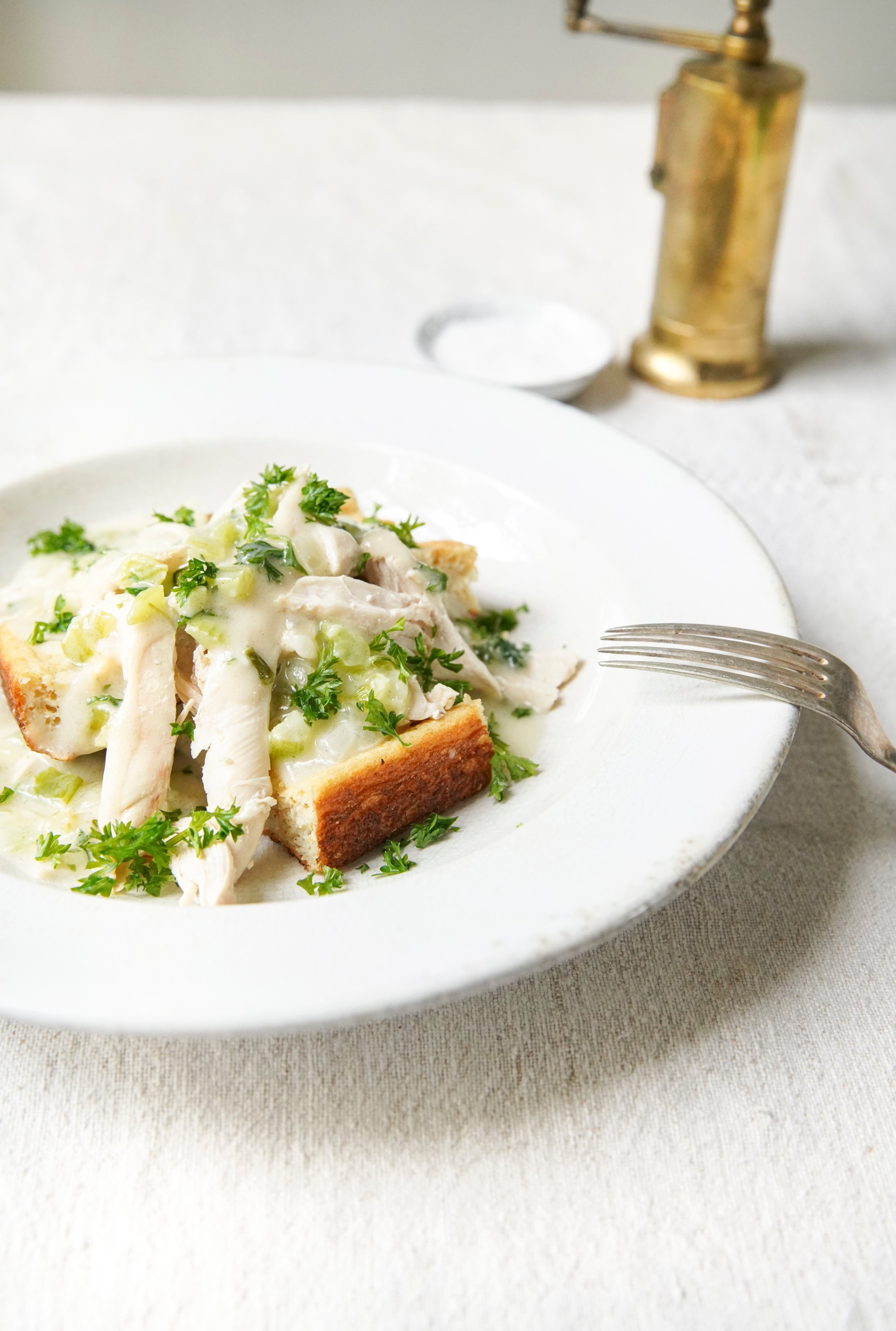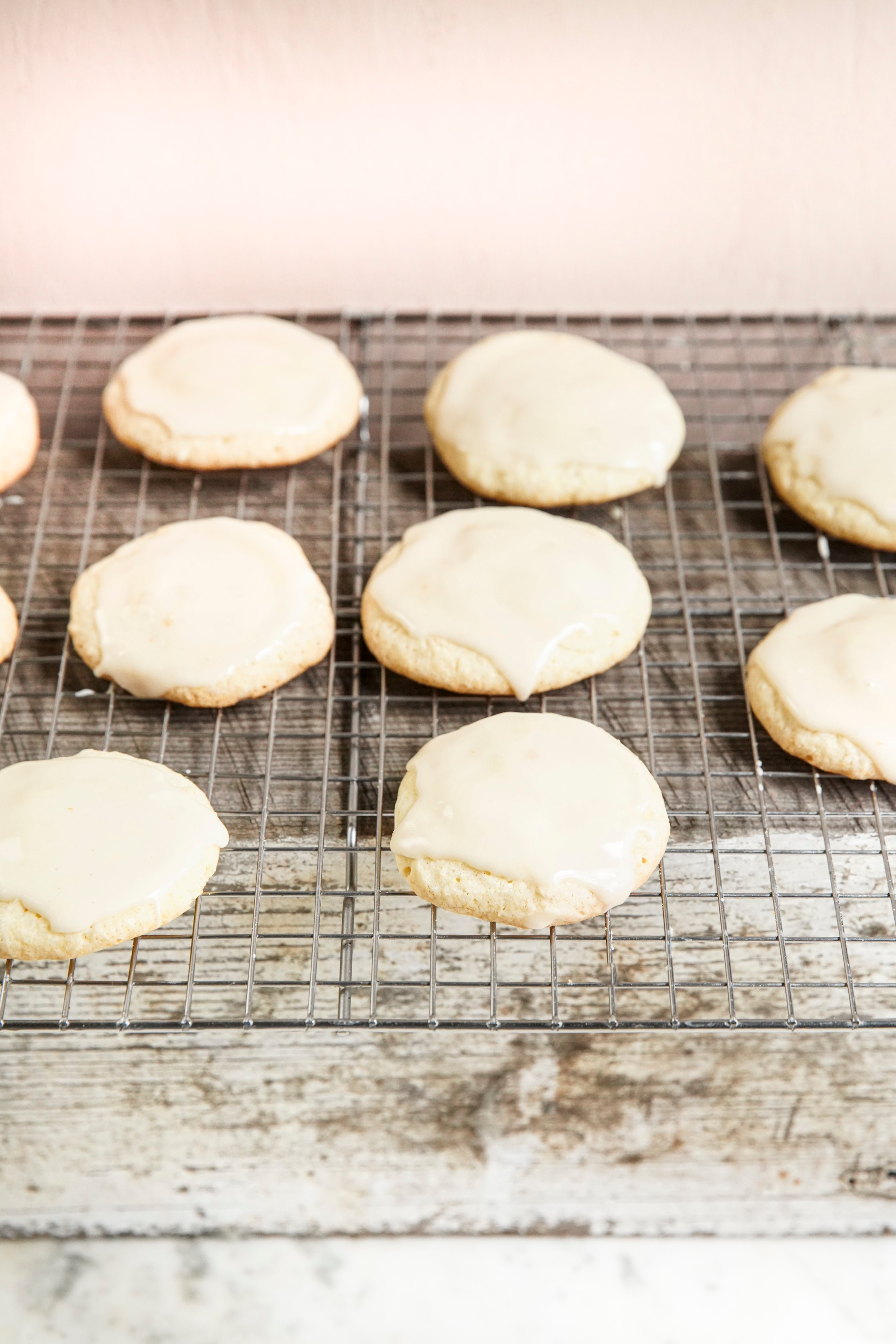Southern recipes, stories that stand the test of time

Anne Byrn’s new cookbook, “Baking in the American South: 200 Recipes and Their Untold Stories” (Harper Celebrate, $44.99), available Sept. 3, is not only a collection of recipes that is sure to make you “want to heat the oven, crack the eggs and start cooking,” as the author hopes. It is also the kind of cookbook you will want to read like a novel.
In an interview from her Nashville, Tennessee home, Byrn said that the idea for the book came when she was writing “American Cake” (Rodale Books, 2016). “It was in learning the history behind those recipes that the light bulb went off. I knew I wanted to write a book about Southern baking but I didn’t want it to be like so many others (just a collection of recipes). I wanted to share the culture of the South and its people.”
The result is a book where recipes are interspersed with stories of the history of Southern baking, and in many cases, the women who cooked these dishes to feed their families and their communities.
“A lot of them were women who did amazing things because they had to, often because they were left behind with children to feed because of war or illness. They rose up through baking and cooking and taught the South how to cook,” Byrn said during the interview.
The book is organized into nine chapters ranging from cornbread to frostings and flourishes. The recipes illustrate how baking was done when there were plentiful harvests and when times were hard. They tell the story of the geography and economics of the South and its complicated history of immigration, discrimination and isolation. Throughout it all, Byrn describes a South that is also full of generosity, goodness, compassion and empathy.
The book’s 200 recipes come from across 14 states from Texas to West Virginia. Byrn’s recipe sources included old cookbooks, newspapers, recipe cards and diaries found with the help of archivists and librarians, word of mouth and, occasionally, happenstance. In one section, she explains how she translated the measurements in old recipes like “butter the size of a walnut” into a modern equivalent (2 tablespoons) as she went about testing the recipes.
Byrn spent three years researching, interviewing, traveling, writing, testing recipes and styling photos for the book. “I can say that after doing the research and interviewing countless people, I don’t think baking in other parts of this country can compete with the depth and variety of baking in the South.”

AUTHOR APPEARANCES
Anne Byrn will speak about “Baking in the American South: 200 Recipes and Their Untold Stories” at these Atlanta-area events:
5:30 p.m., Sept. 5, $45 includes book and event. Cine Theater, 234 W. Hancock Ave., Athens. Hosted by Bitter Southerner, UGA Wilson Center for Humanities and Arts and Five & Ten restaurant. bsgeneralstore.com/collections/books/products/baking-in-the-american-south-by-anne-byrn.
4-6 p.m., Sept. 7, $10 members, $15 nonmembers. Margaret Mitchell House, 979 Crescent Ave. NE, Atlanta. atlantahistorycenter.com/event/anne-byrn
10-10:45 a.m., Oct. 5, free. Decatur Book Festival culinary stage. Carreker Hall at First Baptist Church of Decatur, 308 Clairmont Ave., Decatur. decaturbookfestival.com
RECIPES
Anne Byrn’s new book, “Baking in the American South: 200 Recipes and Their Untold Stories” (Harper Celebrate, $44.99), includes these three recipes that have stood the test of time: a chicken and cornbread main dish, old-fashioned tea cakes and a double-crust version of a classic cobbler.

Nashville Chicken on Egg Bread
Amid the recipes for cakes, pies and biscuits is this recipe for a dinner of perfectly poached chicken and eggy cornbread under a creamy sauce, a dish popularized in the 1940s and ‘50s at a downtown Nashville, Tennessee, restaurant called Kleeman’s. “The recipe was one of my mother’s favorites,” wrote Byrn.
1 (3- to 4-pound) chicken, rinsed
Water to cover chicken plus 1 cup, divided
1 small onion, peeled, cut in half
3 bay leaves
3 teaspoons Diamond Crystal kosher salt, divided
1 teaspoon coarsely ground pepper
1 cup whole milk
2 1/4 cups ground white cornmeal, divided
2 cups whole buttermilk
1 teaspoon baking soda
3 eggs
2 tablespoons vegetable oil
5 tablespoons unsalted butter
1/2 cup finely chopped celery
1/2 cup finely chopped onion
5 tablespoons all-purpose flour or gluten-free flour blend
3/4 cup heavy cream
Seasonings to taste: onion salt, paprika, Diamond Crystal kosher salt and pepper
Finely chopped fresh parsley, for garnish
Cook the chicken: Place the chicken breast-side down in a large Dutch oven. Add just enough water to nearly cover the chicken and turn heat to medium-high. Add onion, bay leaves, 2 teaspoons salt and the pepper. When the water comes to a boil, reduce heat to low, cover pot, and let chicken simmer 2 hours. Turn off heat and let the chicken rest in broth 1 hour. Remove chicken from Dutch oven. Pull meat off bones and set meat aside, discarding skin and bones. Strain broth, discard solids, and reserve 4 cups broth for cream sauce. Refrigerate any remaining broth for up to 3 days, or freeze, for another use.
When chicken comes off the heat, make the egg bread: Heat oven to 400 degrees with a rack in the middle.
Combine milk and remaining 1 cup water in a medium saucepan and bring to a boil over medium-high heat. Quickly whisk in 2 cups cornmeal all at once. Mixture will make a stiff mush. Turn off the heat.
In a large bowl, stir together buttermilk and baking soda. Add eggs and remaining 1 teaspoon salt and beat with an electric mixer on low speed until just combined. Drop the cornmeal mush, bit by bit, into the egg mixture and beat just until smooth.
On the cooktop, heat an 11- or 12-inch cast-iron skillet over medium-high heat and add oil. When oil is smoking hot, turn off the heat and carefully swirl oil around sides of skillet. Pour remaining oil into bowl with cornmeal mixture and stir quickly. Fold in remaining 1/4 cup cornmeal. Pour batter back into hot skillet and put skillet in oven. Bake until lightly browned and top springs back when lightly pressed in the center, 22 to 27 minutes. It will be soft and jiggly, not as firm as cornbread.
Make the cream sauce: While egg bread is baking, put butter in a large skillet over medium-low heat. Add celery and onion and saute until soft, 4 to 5 minutes. Stir in flour, then add cream and reserved 4 cups broth and whisk to combine. Bring mixture to a simmer, then continue cooking over medium-low to low heat until sauce reduces by half, 25 to 30 minutes. Season with onion salt, paprika, salt and pepper. Remove from heat and cover to keep warm.
When ready to serve: cut egg bread into eight wedges. Cut each wedge in half horizontally and place each bottom half in a shallow bowl. Divide chicken between eight bowls, placing on top of egg bread. Top each serving with other half of wedge and divide sauce between bowls. Garnish with parsley and serve at once.
Serves 8.
Per serving (using 1/2 teaspoon onion salt in cream sauce): 590 calories (percent of calories from fat, 42), 38 grams protein, 46 grams carbohydrates, 7 grams total sugars, 2 grams fiber, 27 grams total fat (13 grams saturated), 193 milligrams cholesterol, 1,034 milligrams sodium.
Recipes adapted from “Baking in the American South: 200 Recipes and Their Untold Stories” by Anne Byrn. (Harper Celebrate, 2024).

Tea Cakes Like Grandma Made
“If the South had a version of the French madeleine, it would be the tea cake — a soft and spongy round, more cake than cookie and small enough to tuck in your pocket,” wrote Byrn when she included this recipe in the book’s chapter on cookies.
8 tablespoons unsalted butter, lard or vegetable shortening, or a combination, at room temperature
3/4 cup granulated sugar
1 egg
1 1/2 teaspoon vanilla, divided
1/4 teaspoon almond extract
2 cups cake flour
1/2 teaspoon baking soda
1/2 teaspoon Diamond Crystal kosher salt (if using unsalted butter or shortening)
1/4 cup whole buttermilk
1 cup powdered sugar
2 tablespoons whole milk
Heat oven to 325 degrees, with a rack in the middle. Line a baking sheet with parchment paper.
Put butter, lard or vegetable shortening, or combination of them, in a large bowl. Add sugar. With an electric mixer, beat on medium speed until creamy, about 2 minutes. Add egg, 1 teaspoon vanilla and almond extract and beat until well combined, about 1 minute. Stop mixer and scrape down sides of bowl with a rubber spatula.
In a separate bowl, whisk together the flour, baking soda and salt, if needed. Add the flour mixture alternately with buttermilk to butter mixture, beginning and ending with flour mixture, and mixing on low until just combined.
Scoop dough in generous 1-inch balls onto prepared baking sheet, spacing them 2 inches apart. Bake until tea cakes spring back when lightly pressed in center and just begin to turn lightly browned around the bottom edges, 18 to 22 minutes. Remove baking sheet to a wire rack to cool completely. Repeat with the remaining dough.
Serve the tea cakes warm or let them cool and glaze them.
Make the glaze: Sift powdered sugar into a small bowl and whisk in milk and remaining 1/2 teaspoon vanilla until smooth. Spoon over cooled tea cakes, letting glaze dribble down the sides and set for 20 minutes before serving. Store in a loosely covered container or on a plate draped with waxed paper for several days.
Makes 28.
Per tea cake (made with unsalted butter, with glaze): 108 calories (percent of calories from fat, 30), 1 gram protein, 17 grams carbohydrates, 10 grams total sugars, trace fiber, 4 grams total fat (2 grams saturated), 15 milligrams cholesterol, 48 milligrams sodium.

Ma Hoyle’s Double-Crust Blackberry Cobbler
In the 1930s, Beulah Hinton Hoyle, known as Ma Hoyle, ran a boardinghouse in Gastonia, North Carolina. “Hoyle was especially known for this blackberry cobbler, and she had a unique way of layering fruit and pastry two times in the pan. What emerged from the oven was a triumph, worth traveling many miles for, no doubt!” wrote Byrn.
The recipe was written for fresh berries, but Byrn says frozen will work if thawed and drained well.
9 cups blackberries or a mix of berries, divided
2 1/4 cups plus 2 tablespoons granulated sugar, divided
2 1/4 cups plus 2 1/2 tablespoons all-purpose flour, plus more for rolling, divided
20 tablespoons (2 1/2 sticks) unsalted butter, cut into 1/2-inch pieces, divided
1 1/2 teaspoons baking powder
3/4 teaspoon Diamond Crystal kosher salt
3/4 cup cold whole milk, plus extra for brushing on pastry
2 tablespoons granulated sugar or cinnamon-sugar for sprinkling
Heat oven to 375 degrees, with a rack in the middle. Have a 9-by-13-inch baking dish ready.
In a large bowl, combine 4 1/2 cups berries with 1 cup plus 2 tablespoons granulated sugar and 1 1/2 tablespoons flour. Toss to combine and put into baking dish. Dot with 4 tablespoons butter.
Make pastry: In the bowl of a food processor fitted with the metal blade, combine 2 1/4 cups flour, baking powder and salt and pulse 20 seconds. Scatter 12 tablespoons butter on top of flour. Pulse mixture 8 to 9 times to cut the butter into the flour. Add milk and pulse 10 to 15 times until a soft dough forms. Lightly flour counter and turn dough onto the surface. Divide dough in half. Roll one half into roughly a 12-by-8-inch rectangle and cut into 4 2-inch strips. Arrange pastry strips over berries, leaving space between each strip. Cover remaining pastry lightly with waxed paper or a dish towel.
Put baking dish in oven and bake 30 minutes or until the pastry just begins to brown.
While cobbler is baking, in a large saucepan over medium heat, combine remaining 4 1/2 cups berries with 1 cup plus 2 tablespoons sugar and remaining 1 tablespoon flour. Stir until sugar begins to dissolve into a syrup, then turn heat down to low and cook mixture at a simmer, stirring frequently, until slightly thickened, 20 to 25 minutes. Once cobbler thickens, turn off the heat.
While fruit is cooking, on a lightly floured work surface, roll second half of the pastry into roughly a 12-by-8-inch rectangle and cut rectangle into four 2-inch strips. Cover strips lightly with waxed paper or a dish towel.
After cobbler has baked 30 minutes, remove baking dish from oven and spoon cooked fruit and juices from saucepan on top of pastry. Dot fruit with remaining 4 tablespoons butter. Lay the remaining 4 pastry strips on top, brush them with milk, and sprinkle with remaining 2 tablespoons sugar. Return to oven and bake until golden brown and bubbly, 30 to 35 minutes. Remove from the oven and let cool for 15 minutes. Serve warm in bowls.
Serves 12.
Per serving: 466 calories (percent of calories from fat, 37), 5 grams protein, 72 grams carbohydrates, 48 grams total sugars, 6 grams fiber, 20 grams total fat (12 grams saturated), 52 milligrams cholesterol, 127 milligrams sodium.
Sign up for the AJC Food and Dining Newsletter
Read more stories like this by liking Atlanta Restaurant Scene on Facebook, following @ATLDiningNews on X and @ajcdining on Instagram.

